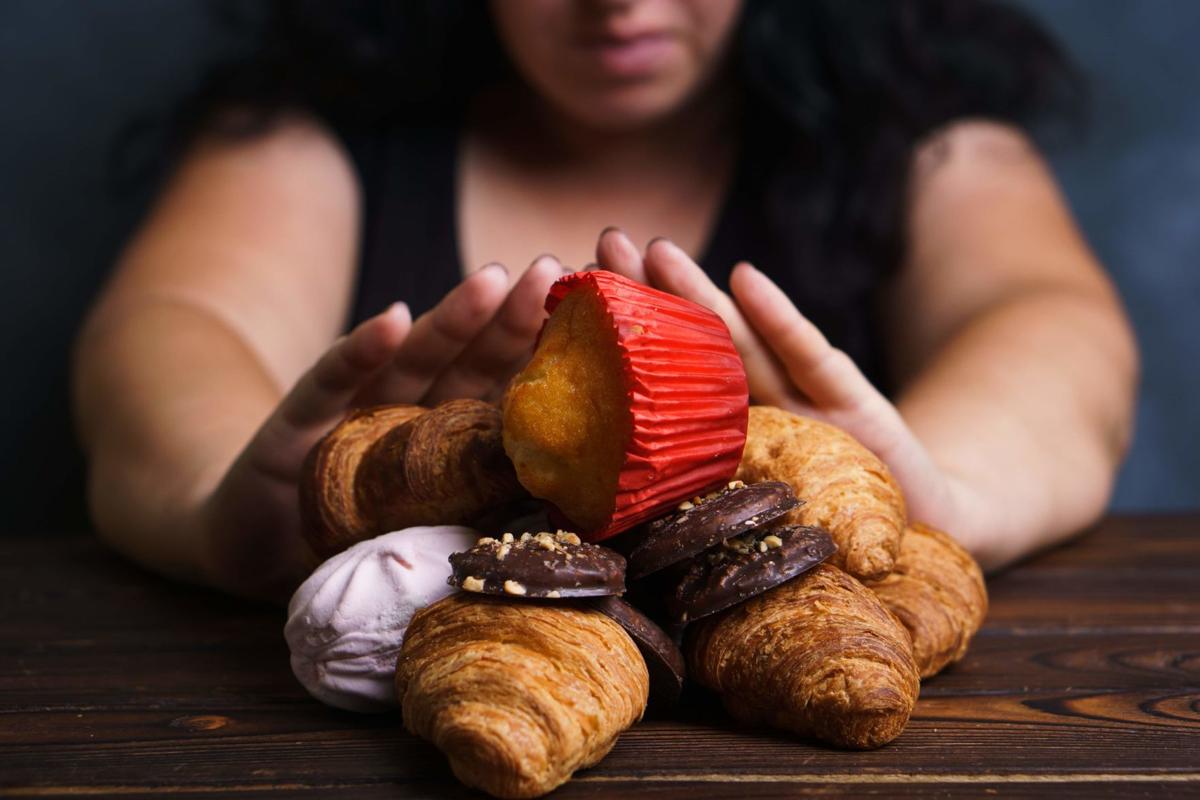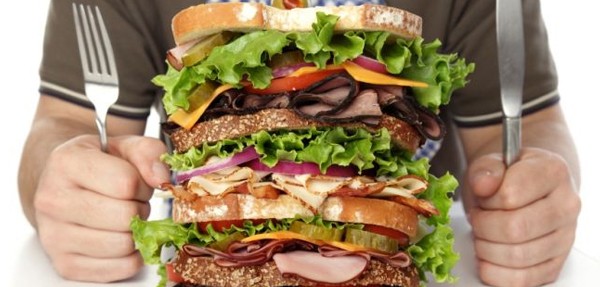Some foods don’t just satisfy hunger — they hijack the brain’s pleasure centers in a way that makes resistance incredibly difficult for some individuals. The phenomenon known as food addiction closely resembles drug addiction in how it affects brain chemistry. This explains why some people find themselves unable to stop eating specific foods, even when they’re full, even when they know it’s harmful, and even when they’ve promised themselves not to.
Researchers have increasingly found support for this idea through brain scans and clinical observations, showing how compulsive overeating interacts with the same reward systems targeted by substances like cocaine or heroin.
Animal and human experiments show that the brain responds powerfully to highly palatable foods — items that are heavily loaded with:
-
Refined sugar
-
Unhealthy fats
-
Excess salt
Much like narcotics, these foods stimulate the release of dopamine — the feel-good chemical — along the brain’s reward circuit. The experience becomes emotionally reinforcing. The person wants that feeling again, and so they eat again. And again.
Eventually, the pleasure signals from these hyper-palatable foods can override natural cues like fullness, satiety, or physical discomfort. That’s when eating behavior becomes compulsive. And this pattern isn’t just about food — it’s a type of behavioral addiction, similar to gambling or compulsive shopping. A person becomes absorbed in the cycle of craving, eating, and chasing emotional relief.
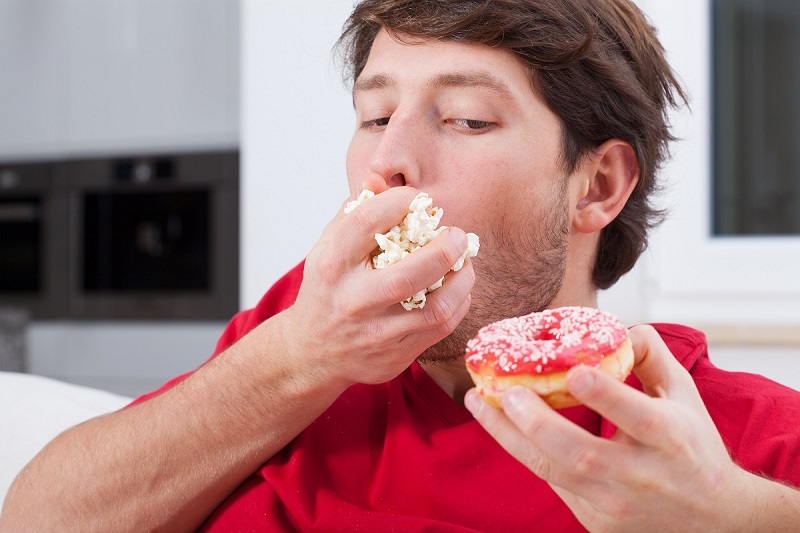
How Tolerance and Obsession Fuel the Cycle
Those who display signs of food addiction often develop a tolerance — meaning, they need to eat more and more of a certain food to get the same feeling of satisfaction. But even as they increase the quantity, the emotional payoff shrinks.
This pattern contributes to obesity for many, although even people with average body weight can struggle with the same psychological compulsion. Their genetic makeup or physical activity levels may help offset the visible weight gain, but the internal struggle remains.
Addiction to food persists regardless of the consequences — be it deteriorating health, strained relationships, or plummeting self-esteem. And just like other forms of addiction, those afflicted often feel powerless to stop — even after countless attempts and repeated promises to themselves.
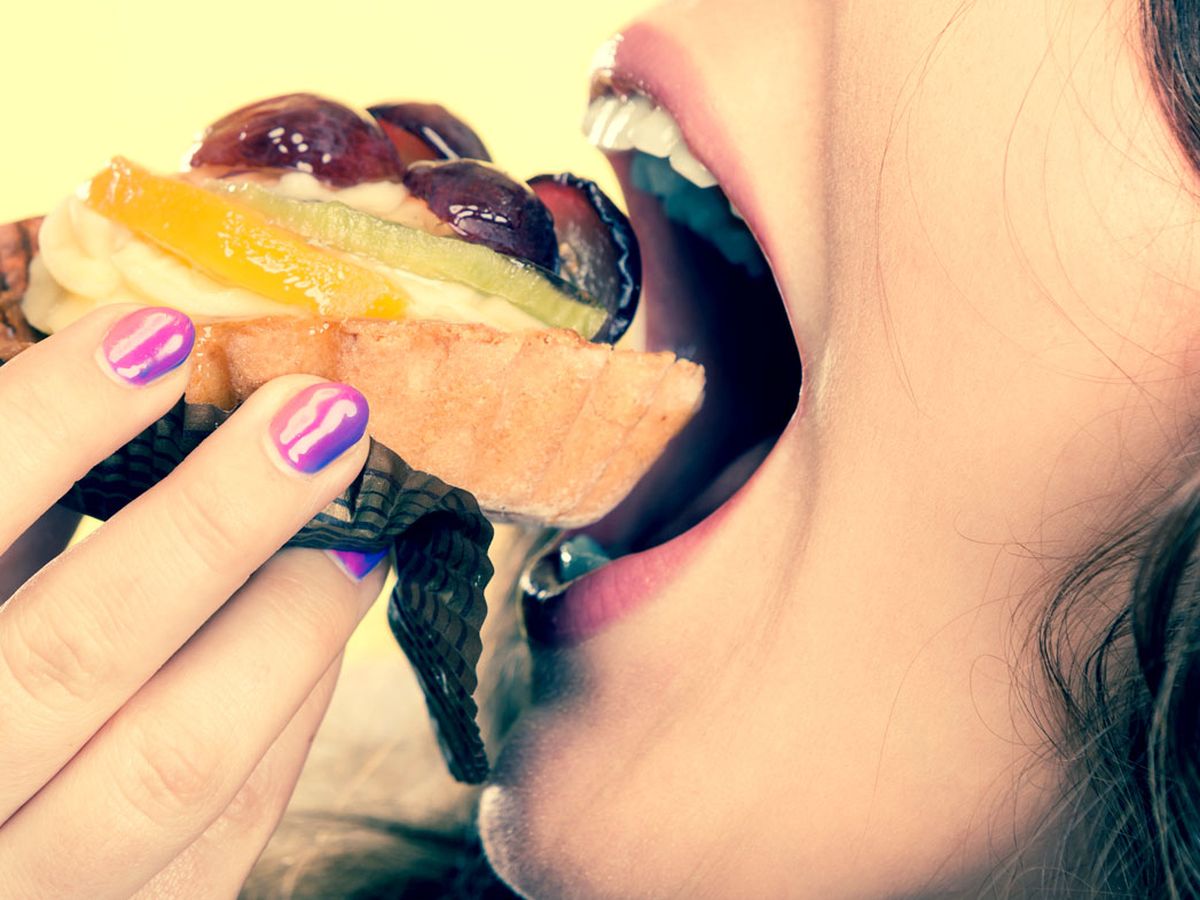
Understanding Food Addiction: What It Really Means
At its core, food addiction is the compulsive craving and consumption of highly processed, unhealthy foods. It mirrors drug addiction in the way it activates similar neurological responses and behavior patterns.
While the term itself is still debated among researchers, the behaviors it describes — intense cravings, binge-eating episodes, and loss of control — are very real. In fact, many experts now link food addiction with disorders like binge eating, bulimia, and compulsive overeating.
SUMMARY
Food addiction behaves like a form of drug dependency. Though the term may still be debated, the behavioral patterns are widely recognized in scientific literature.
What Happens in the Brain?
Food addiction lights up the same reward circuits as narcotics. The neurotransmitter dopamine plays a central role — the same chemical involved in the "high" one gets from drugs like meth or opioids.
When someone consumes candy, soda, fast food, or other junk meals, their dopamine levels spike, creating a temporary euphoria. Over time, the brain begins to expect that high and craves it — not from hunger, but from psychological need.
It’s essential to understand that this compulsion isn’t rooted in weakness or poor discipline. It’s a neurochemical loop — one that subtly shifts how the brain processes desire, motivation, and reward.
SUMMARY
Food addiction involves the same brain chemicals and reward systems as drug addiction — primarily the dopamine pathway that governs pleasure and reinforcement.
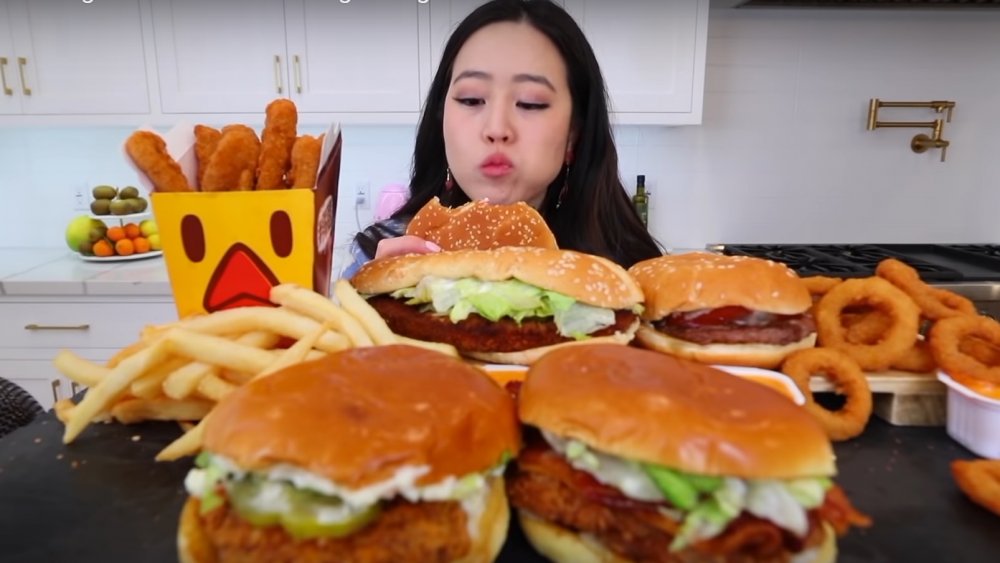
Eight Signs You Might Be Addicted to Food
Unlike many medical conditions, there’s no blood test or scan to confirm food addiction. Diagnosis relies heavily on behavior — what a person feels, thinks, and does around food.
Here are eight common signs:
-
Intense cravings for specific foods, even after a filling meal
-
Once you start eating a craved food, it's hard to stop — often eating far more than intended
-
Eating until you're uncomfortably full
-
Regret or guilt following certain meals, yet repeating the behavior soon after
-
Rationalizing why giving in to cravings is okay (“I had a hard day, I deserve this”)
-
Repeated, failed attempts to stop eating certain foods or to control when they’re eaten
-
Hiding what you eat or how much from others
-
Feeling like you’re unable to stop eating junk food, despite health consequences or weight gain
If four or five of these sound familiar, it may be a red flag. If six or more apply, the likelihood of food addiction is very high.
SUMMARY
Food addiction shows up through craving, binging, guilt, and a repeated inability to control unhealthy eating — even when full or aware of the consequences.
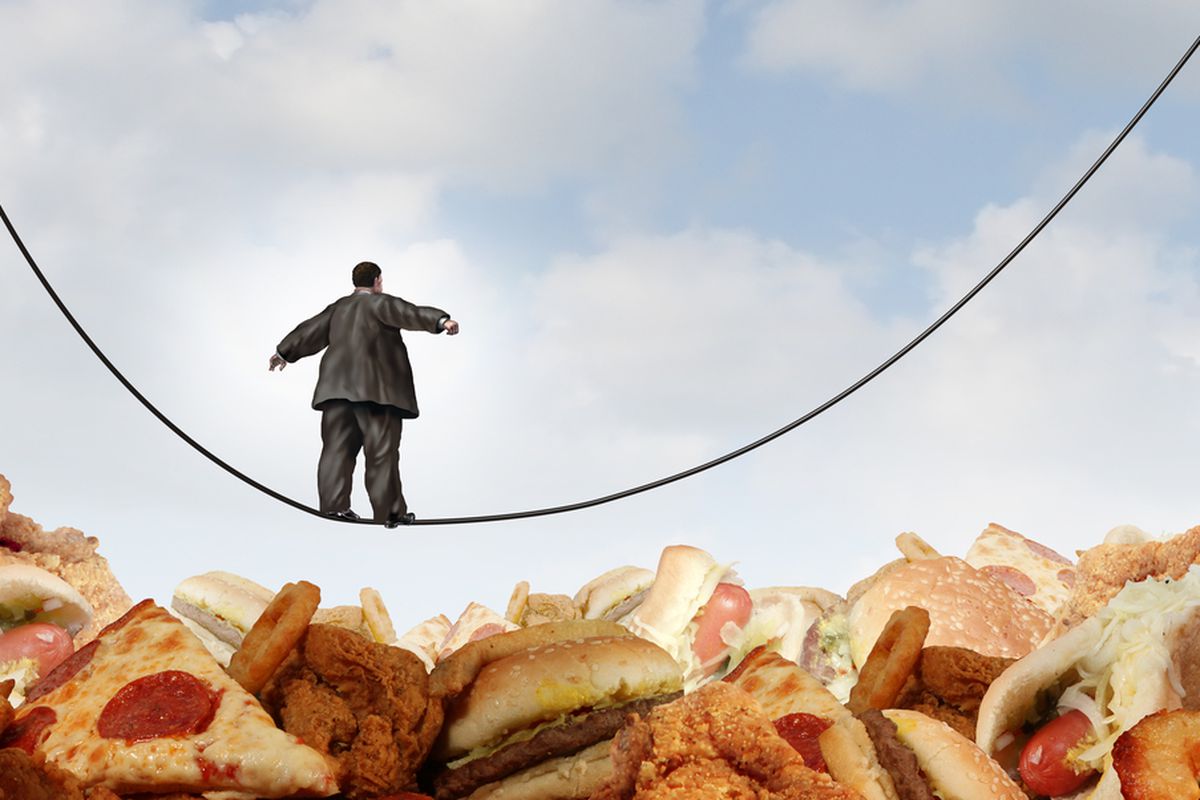
The Real-World Consequences of Food Addiction
Despite being casually tossed around in conversation, true addiction — whether to substances or behaviors — is serious. Food addiction is no different.
Over time, compulsive eating can cause or worsen:
-
Obesity
-
Type 2 diabetes
-
Cardiovascular issues
-
Joint pain
-
Mental health struggles
Emotionally, the toll can be just as severe. Individuals may develop a toxic relationship with their body, harbor feelings of shame, and avoid social situations involving food.
Much like drug dependence, food addiction can reduce life expectancy if left unchecked.
SUMMARY
Food addiction carries serious health risks — including obesity and chronic disease — and often impacts mental health and self-worth.
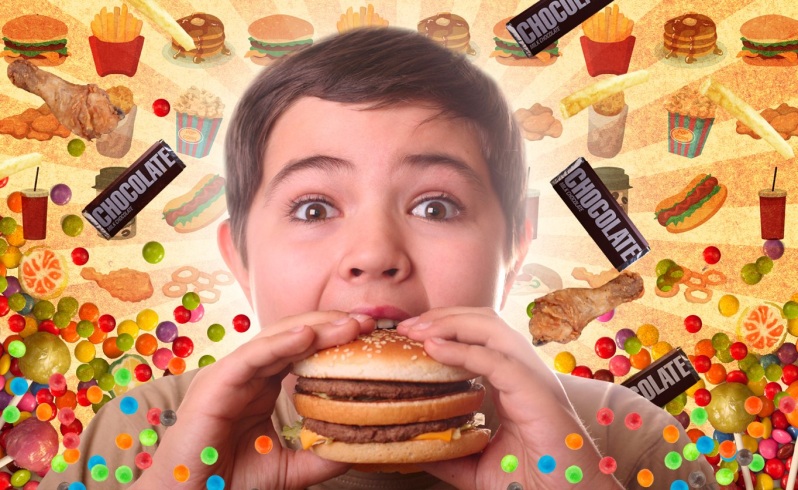
Should You Eliminate Junk Food Completely?
Let’s face it — processed snacks and desserts are practically everywhere. They’re woven into holidays, celebrations, convenience stores, and even gas stations. So is it realistic to quit them entirely?
In some cases, yes. For many, complete abstinence from trigger foods is the only way to break the cycle.
When a firm decision is made to never eat a particular food again, it often removes the exhausting inner debate: “Should I or shouldn’t I?” Over time, cravings tend to weaken or disappear.
One helpful tool is the pros and cons list. It might include:
-
Pros: Weight loss, energy boost, improved health, clearer skin, longer life
-
Cons: Missing out on certain social food moments, explaining your choices to others
Be brutally honest with this list. Then look it over. If the benefits outweigh the sacrifices, you'll know you're on the right path. And many “cons” are often temporary or easily managed.
SUMMARY
A clear decision to quit certain foods can simplify recovery. Writing down the benefits and drawbacks may help clarify motivation and reinforce your resolve.

Getting Started: Steps to Break Free from Food Addiction
Successfully breaking the grip of food addiction doesn’t happen by accident. It takes intention, structure, and a bit of planning to regain control. Here’s how to lay the groundwork for lasting change:
-
List Your Trigger Foods: Write down every food you’ve ever binged on, craved obsessively, or felt guilty about afterward. These are the ones that most often activate the dopamine loop in your brain—and they need to go.
-
Map Out Emergency Eating Options: Life happens. You’ll be hungry, tired, maybe emotional, and close to a fast food joint. To avoid relapse, create a go-to list of local places that offer healthy alternatives. When temptation hits, you’ll already know where to go and what to order.
-
Pre-Select What You Can Eat: Instead of only focusing on what you’re removing, shift your mindset to what you’re embracing. Think of healthy meals you already enjoy—lean proteins, hearty vegetables, fruits, nuts—and make them your new baseline.
-
Post the Pros and Cons: Remember that list? Don’t just write it once and forget it. Print multiple copies. Keep one in your kitchen, one in your wallet, maybe even one taped to your bathroom mirror. These visual reminders can reinforce your decision during vulnerable moments.
One crucial rule here: don’t start a diet. Not yet. Trying to restrict calories while also cutting addictive foods is a double burden that can overwhelm even the most determined person. Give yourself 1 to 3 months to simply focus on breaking the addiction before turning your attention to weight loss.
Once you’ve prepped mentally and practically, choose a start date — ideally within the next few days. When that date arrives, the trigger foods are gone for good.
SUMMARY
Planning ahead increases your chances of beating food addiction. Know your triggers, find healthier alternatives, and delay dieting while you focus on recovery.
Seeking Support Can Make All the Difference
While some people manage to overcome food addiction on their own, most need help — and there’s no shame in that. Addiction, regardless of the substance or behavior, thrives in isolation and secrecy. Support breaks that pattern.
A therapist or psychiatrist trained in eating disorders and behavioral addictions can offer tailored guidance. Cognitive-behavioral therapy (CBT), in particular, is known to be effective for changing the thought patterns that fuel food addiction.
You might also consider peer-based support groups, such as:
-
Overeaters Anonymous (OA)
-
GreySheeters Anonymous (GSA)
-
Food Addicts Anonymous (FAA)
-
Food Addicts in Recovery Anonymous (FA)
These 12-step groups function similarly to Alcoholics Anonymous, with regular meetings (many held online), mentorship, and structured recovery frameworks. They offer shared experiences, emotional accountability, and coping strategies that go far beyond willpower alone.
Don’t underestimate the value of community — especially when cravings strike or you feel like giving up.
SUMMARY
You don’t have to go it alone. Therapists and support groups offer critical help for managing and overcoming food addiction.
The Final Takeaway: You’re Not Stuck This Way
Food addiction doesn’t go away on its own. Left untreated, it tends to deepen over time — affecting not just your health but your confidence, mood, and overall sense of freedom.
But the good news is, this condition is highly treatable. With the right approach, structure, and support, people recover every day. Your path forward begins with three simple actions:
-
Decide that food addiction no longer has a place in your life.
-
Prepare by identifying trigger foods, choosing alternatives, and reinforcing your motivation with written pros and cons.
-
Act — pick a start date, commit to abstaining from addictive foods, and reach out for support if needed.
Whether you start by seeing a professional, joining a group, or tackling this change solo, just know: you are not alone — and you are stronger than this addiction.

